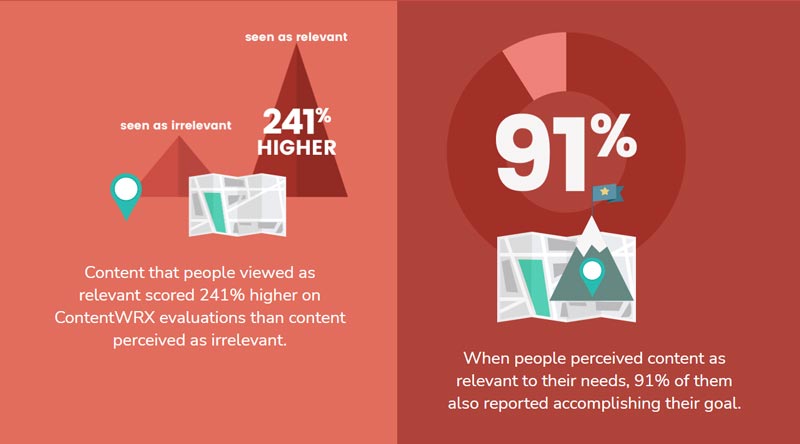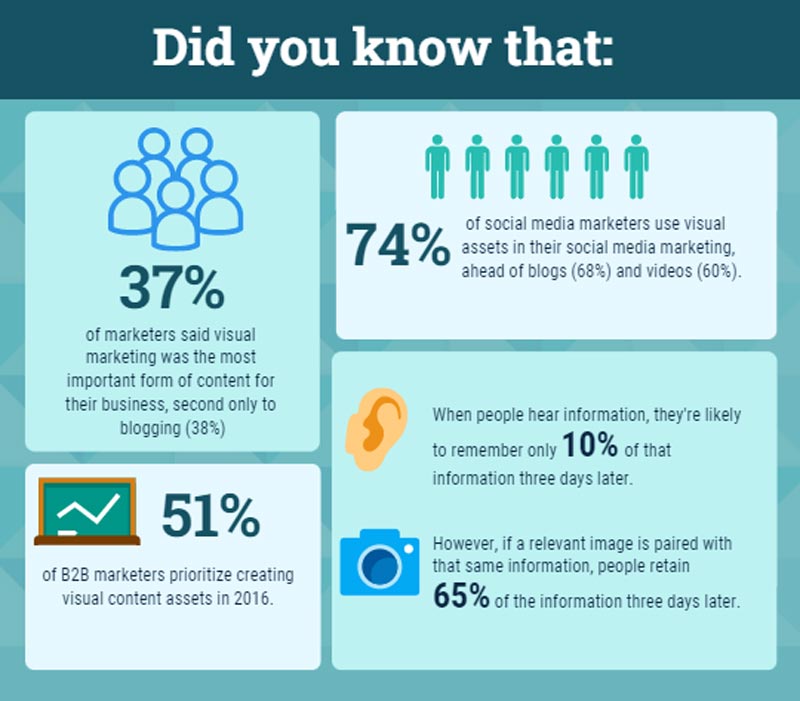In an environment where 80% of marketers prioritize content creation, you have stiff competition for your audience’s attention. You can no longer toss in a bunch of keywords or add a long string of hashtags to land your content at the top of search engine results pages or your audience’s social media feeds.
Along with juggling all the usual marketing balls, you also need to create relevant content that adds value for current and potential customers. This can seem like an overwhelming and daunting task.
Fortunately, we have 8 useful tips you can follow to simplify the process without sacrificing content quality.
1. Understand What Makes Relevant Content
Before you can create content relevant to your target audience, you need to understand what that is. Your buyer persona provides insight into what kind of content has value to your audience.
Relevance varies with your audience’s needs, desires, interests, and pain points. The final critical factor is that your audience must be able to easily perceive that your content is relevant to them. Overall, aim to produce assets that have the following qualities:
- Well-researched
- Original
- Useful
- Comprehensive
Consumers don’t appreciate fluff. Rather, they want enough information and details to satisfy their needs. Refrain from producing content that is too vague, basic, or broad.

Image source: Content Science
2. Do More of What Already Works
Relevant content isn’t a static condition. What works for your audience now won’t necessarily always cut it later. However, using performance data can help you determine what works and when your target is on the move.
Gathering analytics on your content is a drag (pain point, anyone?), usually requiring you to aggregate information from multiple sources and make sense of the varied information.
With DivvyHQ’s content marketing analytics, you get real-time data on how your content is doing. Not only that, but it’s all in one place. You define the key performance indicators and leave the rest to the tech.
Well, almost all the rest. You still have to interpret the data and decide what kind of content resonates and what you need to ditch or revamp.
3. Segment Your Audience
Everything you create isn’t going to be of interest to all of your target audience. To ensure highly relevant content lands where it will count, you may want to segment your audience based on content type or topic.
You can split up target customers by where they fall in the funnel. You can also divide them into groups based on other characteristics, such as demographics, interests, skill levels, and experiences.
For example, if you run an outdoor adventure tour company, you could categorize your audience according to different types of adventures, age groups, or geography.
How do you easily keep track of your groups during content planning? When you work with Divvy’s platform, you have multiple tools at your fingertips, from defining audience segments when creating your strategy, to easily filtering your content calendar to see who you’re targetting when.
4. Diversify Your Content
Different types of content appeal to various segments of consumers. Aim to create relevant content in multiple formats, including blogs, videos, white papers, and social media posts.
Another way to diversify your content is to cover a variety of topics that appeal to the audience segments you identified. You can make it easier to choose topics to write or post about by creating idea buckets based on the following content focal points:
- Answer a question
- Provide a guide or handbook
- Report on trends or research
- Compare potential solutions
- Create surveys
You can also devise long-form pillar content, then break that down into smaller chunks to create additional posts. Consider presenting these in varying formats as well.
DivvyHQ’s platform has a built-in content calendar to help you stay organized. You create categories for your content and color code it for easy referencing. As you schedule your content, a glance tells you if you have too many of one content type too close together.
5. Use Visual Assets
Including visual assets can help you create more relevant content. Adding photos increases engagement, but consider other types of visual content — such as graphics, charts, and infographics — to boost value.
Visual assets enhance viewer understanding and give a reader a break from text. Another bonus is that visual content can boost your SEO, especially when you optimize these graphics.

Image Source: LinkedIn
Instead of searching for visuals as your creators develop the content, consider stockpiling potential assets in an asset library for future use. DivvyHQ’s platform lets you load and store assets and create an organizational format that makes sense for your team.
6. Add Curated Content to Your Calendar
Adding curated content to your asset arsenal is a quick way to flesh out your calendar with highly relevant content. Of course, you can’t share just any content, and you have to do more than simply repost someone else’s content.
However, when done well, this time-saving strategy builds trust in your audience, establishes you as a thought leader, and provides your audience with different perspectives.
As your team collaborates on building your content strategies, they can begin collecting interesting and useful content from others. If you tag them with a unique identifier, it’ll be easy to locate them from your asset library when you need them.
When you curate content, be sure to include your own comments and thoughts about the content and credit the source.
7. Update Existing Content
If you have relevant content in your collection but it’s a little dated, you can always update it to generate new interest. Make sure the topics continue to resonate, then freshen up the data, adjust the keywords, and alter any other information that has changed.
DivvyHQ’s platform has specific functionality in place to help you create an ongoing, content maintenance schedule that can automate this entire process. By specifying a maintenance date on content, you can create a maintenance calendar and get notified of upcoming maintenance tasks.
8. Use a Content Operations Platform to Manage Relevant Content
Having a maintenance schedule is just scratching the surface of what you can do with a content operations platform. At the end of the day, DivvyHQ is designed to help you eliminate content chaos and create more relevant content. It combines the functionality of project management and content management with the tools you need to streamline the content creation journey.
Request a demo today to see how we can help you stay on top of relevant content creation.
